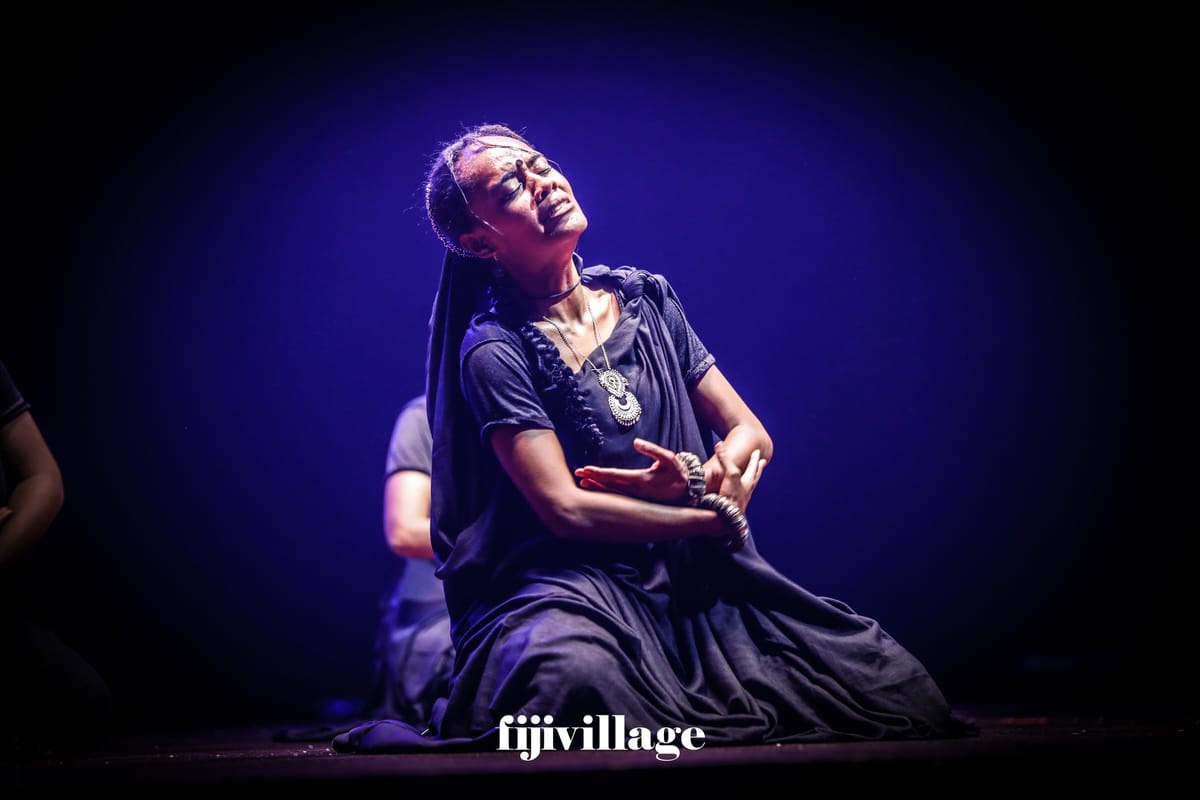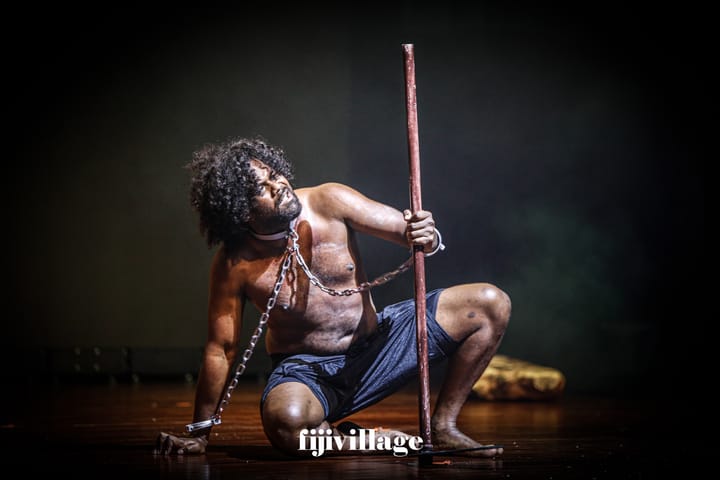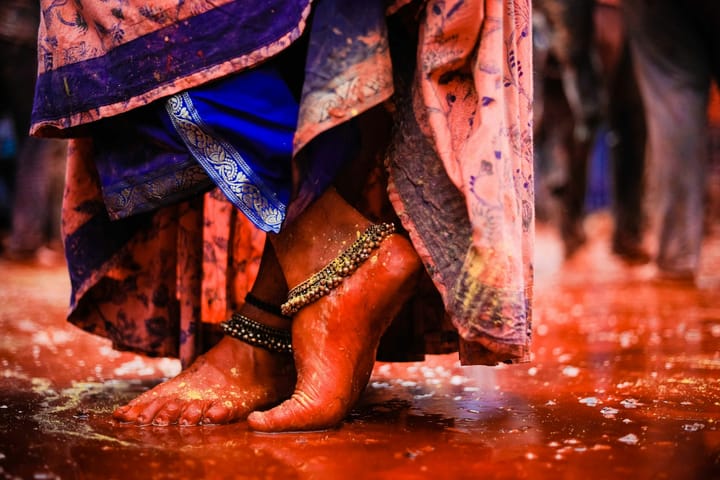Part 4 of 4: A Spectacle of Historical Persistences - The Power of Sound and Light
Phil Dakei’s sound design deserves mention for its meticulous attention to detail and its mastery in achieving the difficult act of being unobtrusive or overall ‘invisible’. Coupled with Talei Draunibaka's Lighting Design, BUTAKOCI is an artistic feat.

A REVIEW: BUTAKOCI (STOLEN) — A Musical Theatre Production on Human Trafficking in Fiji
AUTHOR: Mary Rokonadravu
DISCLOSURE OF INTEREST STATEMENT: This is an Independent Review. I am not associated with any organisation, institution, company, artists or employees directly associated with the production. This Review is not a Commissioned piece of writing.
“To be an artist is to believe in life.” — Henry Moore
Phil Dakei’s sound design deserves mention for its meticulous attention to detail and its mastery in achieving the difficult act of being unobtrusive or overall ‘invisible’. Dakei’s audio design in creating soundscape variations to drive viewer emotion and lend authenticity to the vignettes is critical to the strength of Butakoci.
READ PART 3 OF 4 IF YOU MISSED IT

In the Melanesian Blackbirding sequence, there are several elements and layers worth separating. The sound of pickaxes denotes physical labour and its punctuated use to provide the auditory pathway on Apolonia’s coughing fit, whipping, and subsequent death is powerful. The pickaxes are provided auditory separation as a normal day’s work is conducted, then paused at Apolonia’s coughing, then resumes in punctuated fashion as one collective movement of sound, as they witness his demise which leads to the collective trauma of survivor guilt.
It also features echoes of the Fijian drum , the lali, reverberating across the cane fields. It signals the close but invisible presence of the indigenous iTaukei; the start/end of day with communal prayer; the young religion; and more importantly, it powerfully hints to the gospel of Christ juxtaposed against the scourge of slavery of peoples — to the fact of the British Empire, a Christian power, engaged in global dispossession, slavery, and theft via capitalism. Lali echoes are also present in the Indian indenture sequence as the women gather to prepare a meal, ‘shoaling’ as a protection against vulnerability to sexual attack and succumbing. The same messaging is subtly communicated in this audio device. More powerfully, it uses an auditory device to ‘describe’ the silencing and silence of indigenous iTaukei peoples under the Church and the British Empire. It also points to their very limited say in the sale and use of their tribal lands at the time, pointing to their position as victims of Empire as well.
Dakei’s use of the sound of creaking ropes and wood joints of a ship in the narrated introduction of the Blackbirding sequence place viewers below-decks in the hold of ship — the site of forced ‘imprisonment’ of Pacific Islanders as they are transported. It also points to the experience of Indian indentured labourers who went through the same experience.
Arguably the most haunting sounds subtly embedded in Dakei’s soundscape are those from nature — from Fiji’s fauna. His positioning of the sounds of chirping birds and insects at night and day are juxtaposed against the heavy labour scenes and the sites of sexual violence and vulnerability in both the Blackbirding and Indenture sequences.
Crickets and other insects fill the air with song among sugarcane at night. Roosting birds settle in the sugar labour lines in twilight. Chirping birds provide an anthem for the survival and continuity of life as Apolonia faces his end. As the British Empire leads the stripping of resources in a world where it has limitless, unchecked power, as it commodifies nature and people, the natural world still speaks. Even as Apolonia’s life fades as he collapses, his departure is marked by chirping birds. It is woven so delicately into the fabric of the sequence that it remains unobtrusive. This is a core element to the power of Butakoci.

Butakoci is a triumph in Lighting Design
Butakoci stands as an unforgettable experience on the strength of its Lighting Design. It is a testament to Talei Draunibaka’s Lighting direction. There are elements of lighting shared with other art productions, but two design elements lift Butakoci out onto a higher platform.
There is a deliberate, conscious decision to drape the production in crepuscular tones of twilight, predawn, or shifting darkness. Its use of ‘daylight’ is substantially lower. This decision plays a significant role in building the dark, menacing visual tones of surrounding acts of violence performed both on- and off-stage. It underscores the vulnerability of victims by heightening their disorientation, fear, and suffering. The viewer sitting in the darkness of the Suva Civic Centre Auditorium (live performances) is visually drawn into the performance and halted at the shifting light tones and haze of smoke, or in full light, where this is used.
For the second, a comparative experience has to be shared. It does not have to do with Lighting Design. It has to do with how both art productions achieve the same end, that of suddenly dragging the viewer into the performance to ‘live and breathe’ the experience of those whose story is being reenacted — but through different technical devices.
In 1998, Hollywood director Steven Spielberg’ Saving Private Ryan threw global audiences into the searing experience of the Allied D-Day landings (from the Second World War) through the use of the hand-held camera in the middle of battle-scene performance action. The movie opens with a 23-minute sequence with the hand-held camera capturing young men’s faces moments before the barge ramps drop and slaughter begins. It continues for the next 22 minutes. It had never been done before. With Polish cinematographer Janusz Kaminski, whom he had worked with in Schindler’s List (1993), Spielberg changed the way future war movies and battle scenes would be depicted. It has also moved beyond war movies into other genres of film. It has been etched in my memory as in others who experienced that moment in 1998 and after.

The searing experience in Butakoci is not linked to camera work but Draunibaka’s Light Design. Its most searing use of Light is when the bright lights positioned on stage, are suddenly turned toward viewers to pull down or collapse the fourth wall, the imaginary wall between the performance and the audience or viewer. Audience blinders are usually reserved for live concerts, at the point when audiences are in the throes of emotional contact with singers. In Butakoci, the audience blinders, the intense lights throws the viewer as as ‘complicit’ in the act of blackbirding. Dakunivosa’s Eugene and other troupe members are in a seated sequence, and the blackbirders are hooding them — he is the last one from whom daylight is snatched.
The fast-paced audience blinders make the whole theatre an enormous stage. The whole audience is suddenly thrust in full view of each other and become part of the performance. Three key things occur: the viewer suffers with the victims; the viewer becomes the blackbirder hooding the victims; the viewer is also witness to everything, including their very own action, inaction, and complicity. We become the blackbirder, we become the victim, we become the witness rendered powerless. It is Butakoci’s most powerful moment as it immerses us in suffering under the act, committing the act, and watching ourselves perform the act of violence of hooding and kidnapping.
The lighting design becomes the hand-held camera in a film recording scene. We are placed in the visceral and searing experience of specific, direct violent actions. The audience blinders also transport us to the light and sensory atmosphere of modern-day sites usually associated with human trafficking: both bright and subdued tones of ports, train stations, wharves, night roads, highways, airports, trucks, cities, streetlights, and to our very own lit homes at night— our protection from the world, and more often than not, our sites of violence and abuse. Talei Draunibaka and the ensemble of creatives of Butakoci clearly demonstrate the persisting histories of violence that remain embedded in our cultures and in our daily lives.
Talei Draunibaka demonstrates she is not made for singing or music alone. This is her time. She has arrived. One can only hope this nation and its people are generous enough to recognise her light.
Recommended Citation: Rokonadravu, M., (2024) ‘A Spectacle of Persistent Histories — A Review: Butakoci (Stolen) — A Musical Theatre Production on Human Trafficking in Fiji’, Medium, Suva. Accessed: [Insert Date and Time].
This Review was first published on Medium on 11 August 2024, before the setup of this website.
SKIP TO THE FULL REVIEW



